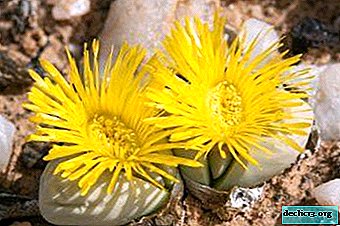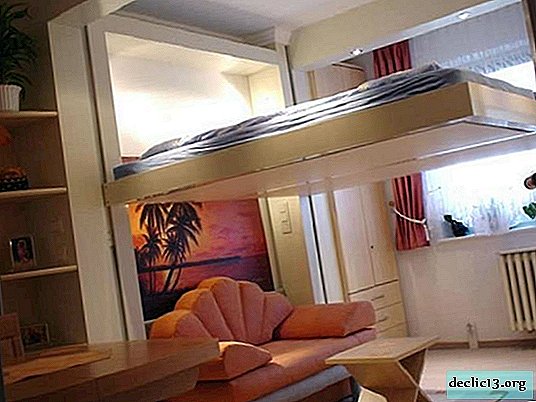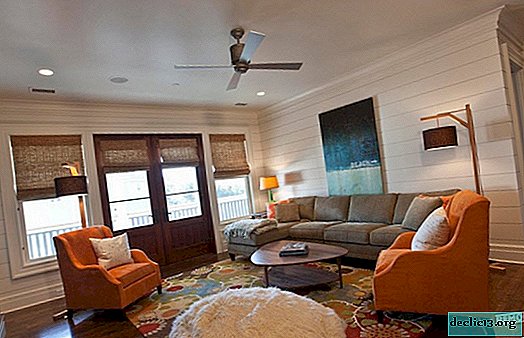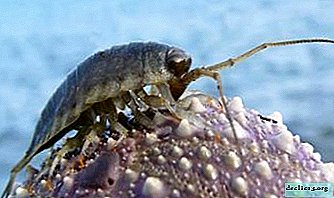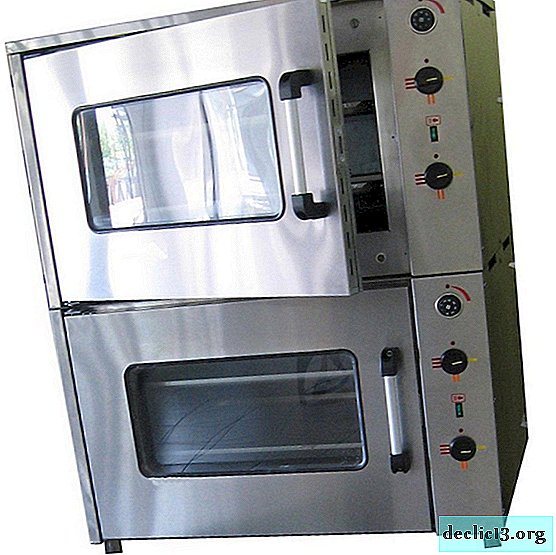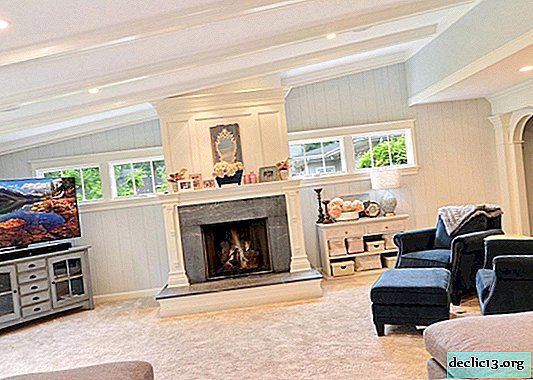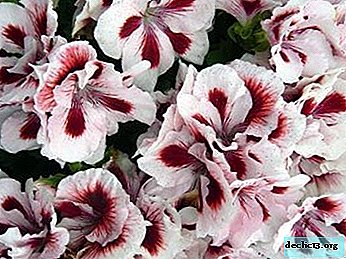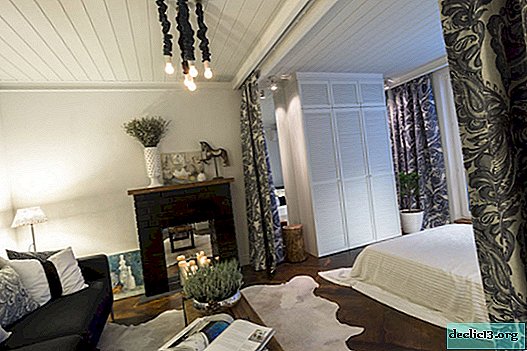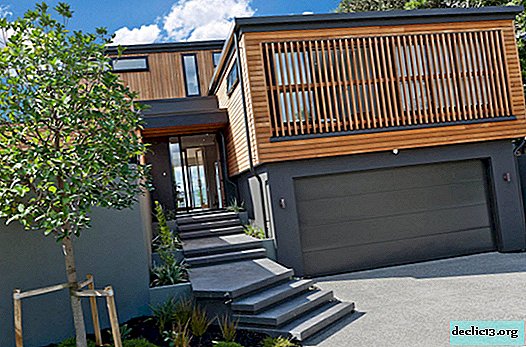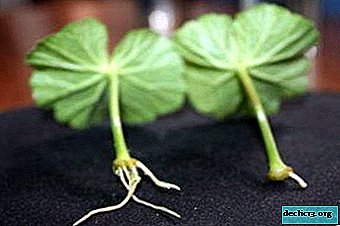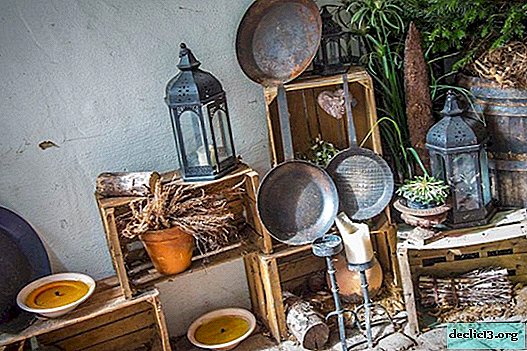The most beautiful and unpretentious varieties of ampel lobelia: what care do they like?
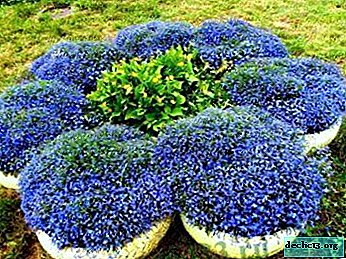
Lobelia is a perennial flower, but in the conditions of central Russia it is grown in open ground as an annual plant. It looks great as a curb along the garden path, along the contour of a flower garden or pond, on an alpine hill and in flowerpots. It is also good as a groundcover in carpeted planting and as an ampel plant in hanging baskets.
At the end of autumn, a flower can be dug up, planted in pots and stored in a greenhouse or on a balcony so that in summer, in the second round, planted in the garden. The plant during the wintering period is poorly developed, but, subsequently, it will bloom more abundantly. Ampelia lobelia is perfectly adapted to a temperate climate, grows rapidly, blooms long and luxuriantly. Varieties of this type are the most common and popular in domestic gardening.
The appearance of the plant
In modern floriculture, the variety is used as an annual flower, planted in hanging flower pots and balcony baskets. Bushes of ampelous varieties of lobelia are small, reaching 40-50 cm. The stems are branched, reddish in color, at first they grow directly, then, in the process of growth, they hang. The leaves are small, dense, oblong, shiny.
The most common varieties have a blue, blue color of flowers. Varieties with white, purple and purple blooms are also found. The flowers are tiny, up to 1.5 - 2 cm in diameter, two-lipped in shape, inflorescences are located close to each other, which forms a lush dense crown.
Natural varieties grow on moist rocky soils, hybrid garden forms are undemanding, perfectly take root in moderately fertile loamy and sandy substrates.Flowering is long - from May to September. Requires cropping to form a beautiful and compact crown.
Description and photo of varieties
Marquise

The bush has a cascade shape, the crown is dense. Stems are overhanging, branch well, right at the base. The length of the shoots is up to 40 cm. The shoots are densely covered with leaves and flowers. The leaves are small, oblong, shiny, dense in structure. The leaves grow alternately, densely planted on the stems.
The flowering is plentiful, with timely pruning lasts until the very frost. The flowers are purple-red, in structure they have two lips, tiny, up to 2 cm in diameter.
Propagated by seeds, the optimal time for sowing is February. At the end of May, seedlings are planted in balcony baskets and hanging flowerpots.This variety is also used in flower beds, along borders. The variety needs a pinch for the density and the correct shape of the crown.
Niagara

The bush is dense, cascading. The stems branch at the very base, hanging in shape. Shoots reach a length of 35 - 40 cm. The variety is characterized by abundant flowering throughout the season. It blooms in June, flowering continues until autumn frosts. The leaves are small, oblong, dense, bright green, abundantly planted throughout the stem. The flowers are small, two-lipped in structure, the colors are dark blue, purple.
Seedlings can be grown independently, the variety is distinguished by good germination of seeds. Seedlings are planted in May in the garden, repeatedly nipped for the bush density.Looks good in hanging drawers, used to form alpine slides and flower beds.
"Blue Cascade"

The shape of the bush is cascading, the crown is dense. The stems branch well, hang. Shoots of medium length - 30 - 35 cm. Leaves densely string the stem, bright, dense, shiny, grow alternately.
The flowers are small, two-lipped, saturated blue, up to 2 cm in diameter. Pedicels are short, inflorescences are located close to each other, which makes the bush dense.
Flowering begins in mid-June, long, with the correct pruning of faded inflorescences, lasts until September.Most often used in hanging flowerpots, the variety grows well on soil in the garden and front gardens, like a groundcover.
"Blue Sky Regatta"

This variety belongs to the early series of ampelous species of lobelia - it blooms 3-4 weeks earlier than other varieties. The bush is dense, elegant, cascading in shape. Bush height - up to 20 cm. Shoots of medium length, branched, drooping, grow up to 20 - 25 cm. Flowering is generous, long, until September.
The flowers are tiny, up to 1.5 cm in diameter, the inflorescences are multiple, closely located to each other. The flowers are pale blue with a purple hue, there are shades of blue and blue.Propagated by seeds, seedlings can be grown at home. Florists are advised to purchase seeds in the form of multi-dragees for uniform distribution on the surface of the greenhouse. Looks great in hanging flowerpots and flower arrangements on the flower beds, along the perimeter of the raised, multi-tiered.
"Sapphire"

Lobelia Sapphire is a very popular variety, characterized by a large branching. Flowering has a pale blue and white scale. This variety is called the Blue Cloud. The core of the flower is marked with a white small spot. The leaves are small, oblong, green, with a purple hue. The bush is small, grows up to 30 cm in height, grows well and quickly.
It blooms luxuriantly for a long time, when pruning faded inflorescences, the second wave of flowering begins in August. The branches are descending, up to 35 - 40 cm long.The variety easily takes root in apartment conditions, grows on open ground in the garden. The variety is most often propagated by seeds. It does not require abundant top dressing.
Landing Features
How to choose and prepare the soil?
For sowing seeds of ampelous lobelia, a moistened, loose, moderately fertilized substrate is used. It is better to purchase the finished substrate in the store, experienced growers prepare the mixture on their own. The composition of the soil mixture for sowing ampel lobelia:
- Sand - 1 hour
- Garden land - 1 hour
- Humus or mineral fertilizers - 0.5 hours
- Expanded clay drainage layer.
The soil mixture is harvested in the fall, left for freezing in unheated rooms. Before sowing, it is recommended that the substrate be steamed or calcined in the oven or microwave for disinfection.
It is convenient to purchase seeds in special granules or dragees, in this form the seeds are evenly distributed in the landing boxes. For uniform distribution of seeds, they are recommended to be mixed with sand or peat. The proportion is 1: 5. It is also convenient to sow seeds on a thin layer of snow, up to 1 cm thick, carefully spreading it on the surface of the substrate.
Suitable seedling pots
For germination of ampelous lobelia seeds, you can use any plastic containers with small cells, such packaging facilitates the picking procedure for grown seedlings.
Florists also recommend using ready-made peat cups, which are conveniently transplanted immediately into landing containers, balcony boxes or immediately into holes in open ground.Advantages and disadvantages
Self-grown ampelous lobelia seedlings have many advantages - the quality of the variety is preserved, seedlings grow stronger and more resistant to diseases and garden pests.
 But the process of growing seedlings is characterized by the duration and complexity of the process. Special care, special watering, repeated pinching and picking are required. The temperature of seed germination should be at least 22 -24 ° C.
But the process of growing seedlings is characterized by the duration and complexity of the process. Special care, special watering, repeated pinching and picking are required. The temperature of seed germination should be at least 22 -24 ° C.
Watering is carried out only with the help of a sprayer, with a strong overmoistening of the soil, a Black Leg fungus may appear, then the entire crop will be destroyed. But the soil should not be too dry. Seeds may not germinate for a long time, growth in the first stage is very slow.
Before planting seedlings in the ground, they must be gradually adapted to fresh air, take out the landing tanks on the street, gradually increasing the time of hardening up to 2 - 3 hours a day.
Step-by-step instruction
The sowing time for ampelous lobelia seeds is February - early March. Seed Planting Scheme:
- A layer of expanded clay is poured into the spacious low landing tank at the bottom for drainage.
- The finished substrate is placed on top, with a layer of up to 5 - 6 cm.
- The substrate is slightly compacted, moisten moderately.
- Seeds are sown without burying them in the soil.
- Provide good lighting, if necessary, use additional lighting with special lamps.
- Containers with seedlings are covered with glass or thick plastic wrap.
- It is necessary to open the seedlings daily for ventilation for 20 - 30 minutes.
- Wipe up accumulated condensate from the film.
- The first shoots appear after 5 to 7 days.
- The film or glass is removed completely when the seedlings reach 3 cm.
- The air temperature is reduced to 18 - 20 ° C.
- 4 weeks after sowing, picking of seedlings is required.
- The pick is carried out with a special spatula so as not to damage the fragile stems.
- Transplanted in small groups of 6 sprouts in each bush.
- Dive seedlings in separate pots or special peat cups.
- To plant on a permanent place in the open ground, seedlings dive again, in May - early June, when the soil warms up well.
- In open ground, the distance between the bushes is at least 20 cm.
- Each hole should have at least 6 sprouts for decorative flowering.
- As soon as the seedlings reach 2.5 - 3 cm in height, the tops must be cut.
- Pinching is carried out 2-3 times every 3 weeks to form a compact bush.
Advantages and disadvantages of sowing in a large capacity
Experienced flower growers often sow the seeds of ampelous varieties of lobelia immediately in large spacious containers.
 The most important advantage of this method of sowing seeds - this method is considered simpler and less time consuming. But you should consider some features of the care and cultivation of seedlings:
The most important advantage of this method of sowing seeds - this method is considered simpler and less time consuming. But you should consider some features of the care and cultivation of seedlings:
- Good lighting is required for the germination and growth of seedlings.
- It is necessary to distribute seeds as evenly as possible on the surface of planting pots or baskets.
- Moderate regular watering of seedlings only from a small spray.
- Drainage holes and drainage itself are necessary with this method of sowing.
- Air temperature - 20 - 24 ° С.
Action algorithm
The procedure for seeding lobelia ampelous is carried out in early March:
- A drainage layer is distributed at the bottom of the pot or box with openings for water drainage.
- Evenly sown seeds on the surface of the substrate.
- Boxes are covered with any transparent cover.
- When growing seedlings, it is important to thin out or transplant into other pots in groups.
- The distance between the group of seedlings is at least 15 cm.
Watering watering seedlings should not be, only with a spray bottle or a special pear under the root. After 5 weeks, you can pinch the seedlings.
If the flower is planted in multi-tiered flowerpots, where long shoots are desirable, pinching of seedlings is not needed.
Care
- Temperature.Ampelia lobelia is a heat-loving flower, but it is young shoots that do not tolerate heat well. The optimum growth temperature is 20 - 22 ° C.
- Watering.Watering should be moderate, drying should not be allowed, but the substrate should not be flooded - root rot appears. Important: the soil should be slightly moist.
- Shine.This variety loves light, in the shade the shoots are extended, become thin, flowering turns pale and sparse. Places with a variable shadow should be chosen, direct sunlight should also be avoided. Varieties are afraid of drafts.
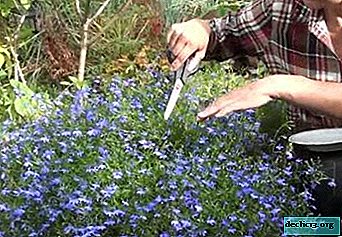 Pruning.Immediately after the first flowering, it is recommended to cut the stems in half - side shoots and new buds appear.
Pruning.Immediately after the first flowering, it is recommended to cut the stems in half - side shoots and new buds appear.- Top dressing.It is necessary to fertilize the flower regularly; excessive fertilizing with organic fertilizers and nitrogen should not be allowed; this stops flowering.
It is recommended to feed with potassium sulfate.
- Pot.Hanging flowerpots, flowerpots, balcony drawers should be spacious, medium height with drainage holes for water drainage.
Varieties of ampel lobelia will decorate any flower beds, flower beds in the garden and open balconies and loggias of apartments with their contrasting lavender blooms.

 Pruning.Immediately after the first flowering, it is recommended to cut the stems in half - side shoots and new buds appear.
Pruning.Immediately after the first flowering, it is recommended to cut the stems in half - side shoots and new buds appear.